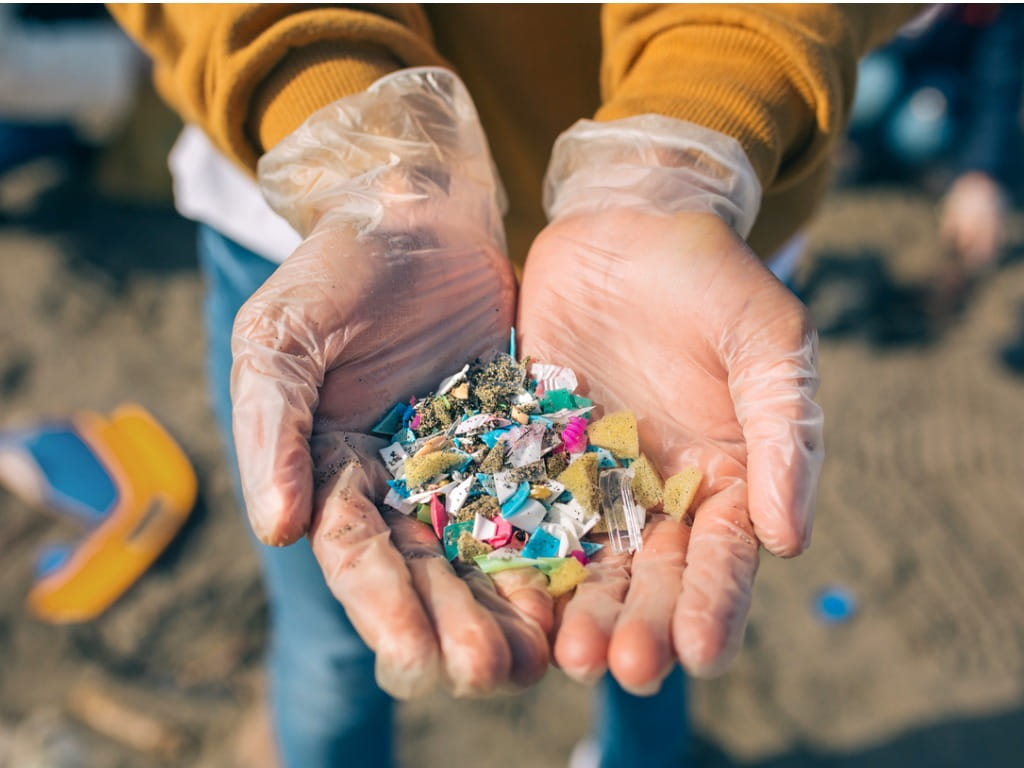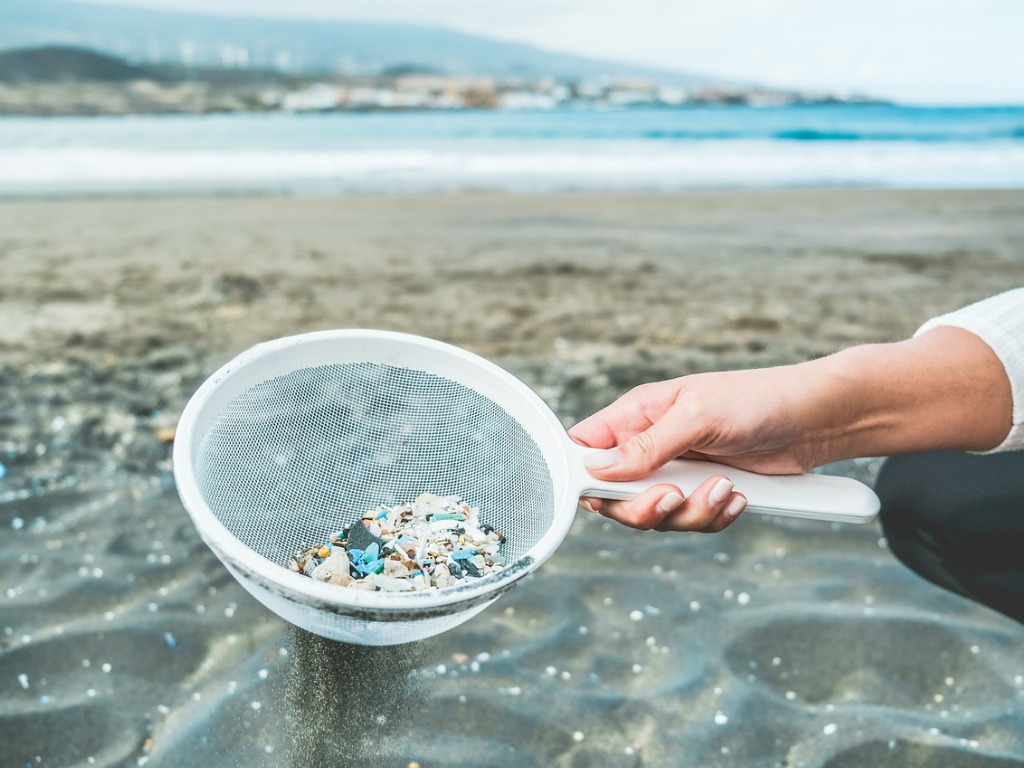Are Microplastics Harmful?

The Bottom Line
Microplastics are common throughout our environment and are present in the air, food, and drinking water. Microplastics have also been found in the human body, but it’s unclear if they cause undesirable health effects.

What are microplastics and where do they come from?
If you look at your current surroundings, it’s likely that you will see plastic. The production and use of plastic products have increased dramatically since the widespread manufacturing of plastics began in the 1950s. Plastics are lightweight, durable, and cheap, and these characteristics make them a useful component of our housewares, packaging materials, and other everyday goods. Currently, more than 320 million tons of plastic are produced worldwide each year. Half of these products are manufactured for single-use packaging. Since only a small fraction of plastic products are recycled, most plastic products are discarded as waste.
Plastics are made from petroleum derivatives that are not easily biodegradable. This means that instead of breaking down quickly, discarded plastic products accumulate and persist in landfills, oceans, and other environments. Plastics are now found in all the oceans on Earth. Marine mammals and bird species are known to consume plastic fragments, and some bird species even feed plastic pieces to their chicks. As many as 50 trillion pieces of plastic are present in oceans today, and 5 million tons of plastic are carried from rivers to oceans each year. When plastic products enter marine environments, they are subjected to UV radiation, winds, and physical abrasion from wave currents. These forces promote the breakdown of plastic products into smaller fragments. These fragments are called microplastics or nanoplastics depending on their size. In general, microplastics are plastic fragments that measure less than 5 millimeters in length, while nanoplastics are smaller pieces that measure less than 1 micron in length.
Why are microplastics a problem?
Because of their small size, microplastics can easily spread through the air, accumulate in the environment, and be difficult to detect. Microplastics are present in alcohol, drinking water (bottled water contains more microplastics than tap water), and even table salt. Filter feeders such as mussels and oysters can consume microplastics that are suspended in seawater, and microplastics are found in many seafood species. Microplastics have also been manufactured for use in exfoliants, toothpastes, and other cosmetic products. The U.S. Congress passed the Microbead-Free Waters Act of 2015, which prohibited the manufacture and sale of rinse-off cosmetics (including toothpastes, cleanses, and exfoliators) that contain microplastics.
Do microplastics harm humans?
When humans consume food, drink water, or breathe air that is contaminated with microplastics, the plastic fragments can enter the body. Overall, food intake results in the consumption of up to 52,000 microplastic fragments per person each year. Microplastics have been found in human saliva, head hair, and feces, suggesting that we are all exposed to these plastic fragments on a regular basis. Some researchers believe that microplastics have detrimental effects on human health. Microplastics can absorb undesirable chemicals, including heavy metals, polychlorinated biphenyls (PCBs), and pesticides from the environment. Human consumption of microplastics can result in increased exposure to these chemicals and might lead to poisonous effects. Humans can also be exposed to microplastics through inhalation of contaminated fibers or dust, and microplastics have been found in human lung tissue. Microplastics can enter the skin through sweat glands, hair follicles, or open wounds. While some studies suggest that microplastics might affect inflammation, cellular survival, and metabolism in humans, the true health risks of microplastics remain poorly understood. Even though microplastics are known to enter the human body, scientists still don’t know how the body absorbs, metabolizes, or eliminates these particles, and the exact dose of microplastics needed to cause disease remains unknown. Many of the studies that assessed potential health effects of microplastics involved occupational settings (where workers were exposed to large amounts of certain types of microplastics, often for prolonged periods of time) or implanted plastic medical devices, and the results of these studies might not be applicable to the general population. Since plastics have only been in widespread use since the 1950s, there have been few long-term studies of the effects of microplastics on the human body. Because of these factors, it is difficult to state with certainty that microplastics are harmful to human health.
Because microplastics are so common throughout our environment, it’s impossible to avoid all contact with these particles. There are currently no regulatory exposure limits for microplastics or nanoplastics. People who desire to avoid exposure to microplastics should consider using water filtration systems to remove microplastics from drinking water, although this does not prevent exposure to other sources of microplastic fragments such as food or air. The use of paper, bamboo, or other alternatives to plastic can reduce the amount of microplastic that eventually enters the environment and our bodies. For now, there is no conclusive evidence that microplastics cause cancer or other serious diseases in humans.
If you have questions about poisoning from environmental sources, contact Poison Control for expert advice. Help from Poison Control is available at www.poison.org and by phone at 1-800-222-1222. Both options are free, confidential, and available 24 hours a day.
Kelly Johnson-Arbor, MD
Medical Toxicologist
Poisoned?
Call 1-800-222-1222 or
Prevention Tips
- Avoid use of single-use plastic products such as takeout food containers and disposable utensils.
- Use biodegradable materials to reduce environmental waste.
- Consider using a water filter to eliminate contaminants from drinking water.
This Really Happened
Eight healthy men and women (aged 33–65 years) participated in a study to assess the presence of microplastics in the human body. Seven of the study participants admitted to drinking from plastic bottles daily, and several had used cosmetic products that contained plastic polymers. Each participant provided a stool sample, which was then assessed for the presence of microplastics. Three to seven microplastics of various sizes and shapes were detected in each stool sample, suggesting that ingestion of microplastics is common in humans (from Schwabl et al., 2019).For More Information
References
Andrady AL. Microplastics in the marine environment. Mar Pollut Bull. 2011;62(8):1596-1605.
Vethaak AD, Legler J. Microplastics and human health. Science. 2021;371(6530):672-674.
Poisoned?
Call 1-800-222-1222 or
Prevention Tips
- Avoid use of single-use plastic products such as takeout food containers and disposable utensils.
- Use biodegradable materials to reduce environmental waste.
- Consider using a water filter to eliminate contaminants from drinking water.
